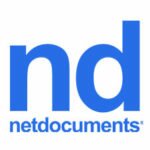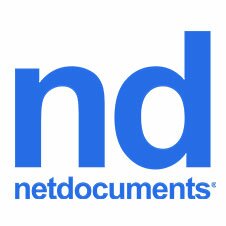Patterns of process improvement with NetDocuments
From data import to document drafting and storage, there are many ways for law firms to integrate automation opportunities into their operations. The advantages are strikingly human as well as financial — and, “coupled with a cloud strategy, can lead to increased competitiveness for clients and talent in a landscape that won’t stop shifting”, says Scott Kelly at NetDocuments.
Anecdotally, the disruption brought on by a year heading into and out of lockdowns finally won a big tranche of legal businesses over to the idea that process change wasn’t all bad — even where the transformation was brought about by some of the very darkest of days. However, a culture of ‘continuous improvement’ calls for an approach that regularly questions whether the operational status quo could be made more efficient, productive — and even pleasant.
Scott Kelly, senior product manager at NetDocuments, says: “Of course, there were some huge shifts in the pandemic — of core systems to the cloud, for example, and moving email traffic to collaboration tools — and these are now enabling firms to be even more nimble and keep evolving with the times.”
The measure of automation
Scott continues: “The nature of these platforms is to facilitate this evolution. But law firms furthest along the process-improvement path typically have something in common — they are critically evaluating and measuring the impact of their innovations.”
“This is a calculation that may not be a ‘perfect process’ itself,” he says. Although savings can be substantial, it might not even directly centre on cost. Appropriately, given events of recent years, an enhanced process could mean a provable or probable business impact on people’s wellbeing or quality of life — and from there on to talent retention. “This holistic view of ROI allows a business to continue to make the case for further rounds of innovation investment.”
And when it comes to the opportunities for automation, specifically, to lead to improved practices, there are some key actions a firm showing strong progress might pursue. “First, they’re continually looking for the ability to remove duplicative entry of data points,” he says. “For example, they can automate parts of document drafting with information already stored elsewhere, or automatically collect metadata for tagging those documents in a system.
Often law firms will still be manually typing in their client information — and then still retyping it into the practice management system or to prepare sets of documents. With PatternBuilder, data like this can be saved and reused with a click. Depending on document type, we’re seeing some time savings of 50% or more.
“They can also simply measure people’s ‘clicks’ to identify automation opportunities. At each touchpoint you can count the number of ‘clicks’ it takes a lawyer or paralegal to complete a task and explore where tools have the potential to streamline.”
And he points out that legal business could also learn from an appreciation of ‘interconnectedness’ of their tech stack — noting the value of integrated solutions.
“Interestingly, OpenAI recently raised $10bn, but it doesn’t yet have 400 employees — in part because it’s laser-focused on developing the core competency that differentiates what it does,” he explains.
It’s a similar story to one of the big arguments for a cloud strategy. “Rather than selling our customers a solution, the NetDocuments cloud platform becomes a conversation that we’re continually having with our customers and with the market. You just can’t do that with on-premises software — you couldn’t have the conversation and implement change in a month or two. In the cloud, you can assess an opportunity and start building that much faster.”
Empowerment to the people
Kelly was a co-founder of the no-code automation toolkit Afterpattern — since acquired by NetDocuments and integrated with its document management system as a product called PatternBuilder. He now oversees that world, as well as the company’s activity in the artificial intelligence arena.
PatternBuilder helps parts of a firm to identify and implement automation efficiencies for themselves. However, while you wouldn’t expect him to see automation as anything other than advantageous, he admits it’s possible to have “too much of a good thing” when empowering practices to build their own new legal workflows and templates by ‘drag and drop’. Change should still be approached strategically.
“It’s always good to start small, with a clear and discrete manual task.” The typical intake form is one good example. “Often law firms will still be manually typing in their client information — and then still retyping it into the practice management system or to prepare sets of documents.
“With PatternBuilder, data like this can be saved and reused with a click. Depending on document type, we’re seeing some time savings of 50% or more.”
But once again he really stresses the qualitative impact of this change on people’s day-to-day experience of work: “It’s time that can truly be used to focus on more intellectually gratifying work — something I probably didn’t fully appreciate before.”
And having those opportunities integrated and embedded in a platform where people are working every day solves two more potential problems. “Lawyers don’t need to click and switch between multiple different systems or browsers — they can keep focus — and by enabling that, firms also significantly mitigate their security risk.”
With all these factors combined, forward-looking firms can continue to innovate around their processes and products with agility — keeping up with that accelerating pace of change and, in so doing, competitiveness for clients.



